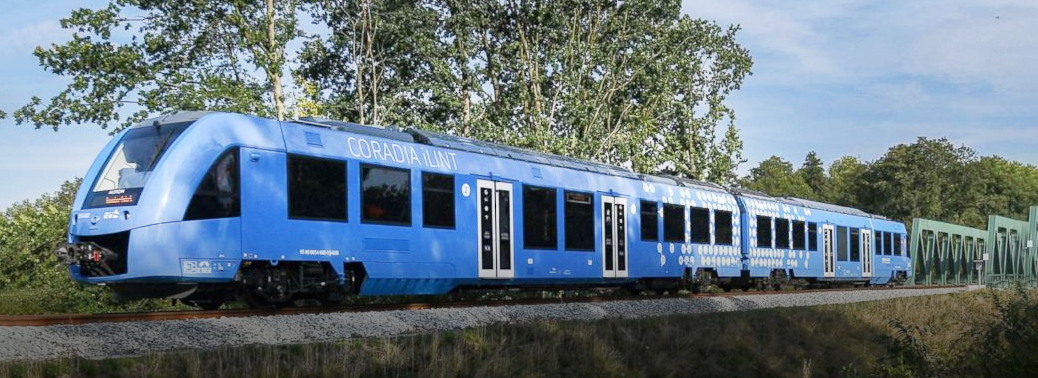GERMANY ROLLS OUT WORLD’S FIRST HYDROGEN TRAIN
16, Sep 2018

Prelims level : Science & Tech
Mains level :
Why in news?
- Germany on Monday rolled out the world’s first hydrogen-powered train, signalling the start of a push to challenge the might of polluting diesel trains with costlier but eco-friendly technology.
Background:
- Hydrogen trains are equipped with fuel cells that produce electricity through a combination of hydrogen and oxygen, a process that leaves steam and water as the only emissions.
- Excess energy is stored in ion lithium batteries on board the train.
- The Coradia iLint trains can run for around 1,000 km on a single tank of hydrogen, similar to the range of diesel trains. Alstom is betting on the technology as a greener, quieter alternative to diesel on non-electrified railway lines — an attractive prospect to many German cities scrambling to combat air pollution.
- Two bright blue Coradia iLint trains, built by French TGV-maker Alstom, began running a 100 km (62-mile) route between the towns and cities of Cuxhaven, Bremerhaven, Bremervoerde and Buxtehude in northern Germany — a stretch normally plied by diesel trains.
- Alstom has said it plans to deliver another 14 of the zero-emissions trains to Lower Saxony by 2021, with other German States also expressing an interest.
Advantages of hydrogen fuel:
- It’s a renewable energy source and bountiful in supply
- It practically a clean energy source
- Hydrogen energy is non-toxic
- It’s far more efficient than other sources of energy
- Used for powering space ships
Disadvantages of hydrogen fuel:
- Hydrogen energy is expensive
- Storage complications
- Tricky to move around
- It is highly flammable
- It is not easy to replace existing infrastructure.






